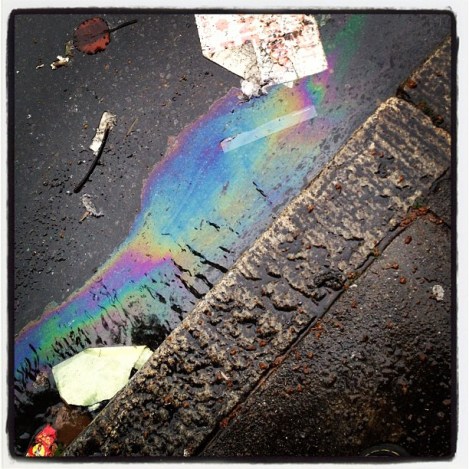Nobody wants to take responsibility for nasty, polluted storm-water runoff. But the Supreme Court might soon force a few somebodies to do just that.
Today the court is hearing two cases on runoff from logging roads in the Pacific Northwest, which environmentalists say can threaten fish.
And tomorrow the court will hear a case on Los Angeles’ filthy storm water, which contains “high levels of aluminum, copper, cyanide, fecal coliform bacteria and zinc,” the U.S. 9th Circuit Court of Appeals said last year. That water flows into the Los Angeles and San Gabriel rivers and ultimately pollutes the area’s beaches.
The fight over L.A.’s dirty water began back in 2008, when the Natural Resources Defense Council brought suit against the county flood control district, hoping to force stricter measures to prevent water pollution. But the county doesn’t acknowledge that the water is its responsibility. From the Los Angeles Times:
County officials agree storm water is polluting the rivers but disagree on who is responsible. Its one monitoring station along the Los Angeles River is in Long Beach, near where it empties into the ocean.
“Yes, there are pollutants in the water, but dozens of municipalities are upstream from there. It’s a collective runoff. It doesn’t point to a particular source,” Gary Hildebrand, assistant deputy director of the L.A. County Flood Control District, said in an interview.
In court, the flood control district’s lawyers have argued that because the Clean Water Act regulates only “discharges” of pollutants, the county is not responsible for discharges that come from the thousands of drains in the county’s 84 cities.
The dispute, if nothing else, illustrates the difficulty of regulating storm water. The Clean Water Act of 1972 first targeted “point sources” of pollution, such as an industrial plant putting toxic chemicals into a creek, or a sewage plant that was leaking sewage into a river. Violators could be identified and forced to stop the pollution.
By contrast, a heavy storm sends water flowing from across a vast area, picking up pollutants along the way. There is no obvious point source.
Who will win: Clean water or municipal fiefdoms that buck collective responsibility?





